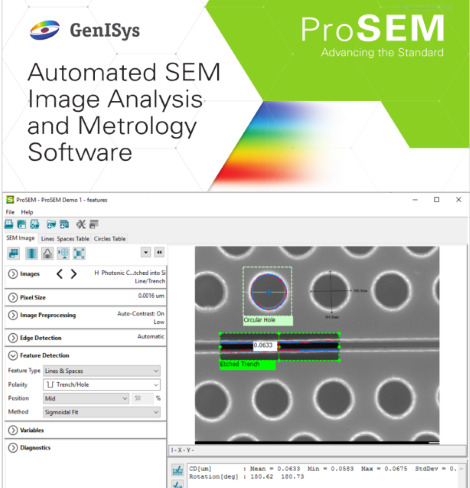History
Driven by the strong demand of e-beam equipment manufacturers and users for a dedicated data preparation solution , Ulrich Hofmann and Nezih Ünal started GenISys GmbH in 2005 to serve equipment vendors and end-users with fast development and highly dedicated service.
2005- 2006
Layout Engine has been positioned as first OEM product and integrated into the Zeiss MeRiT mask repair system.
The end-user Product BEAMER was launched January 2006 at the EMLC conference in Dresden. By strong cooperation and support leading equipment manufacturer and major nano-fabrication center BEAMER became the quasi standard for advanced e-beam direct write in subsequent years.
2007 - 2008
The global market presence and customer service was enabled by establishing the subsidiaries GenISys Inc. in Los Gatos-CA, serving customers in North-Amerika and GenISys KK in Tokyo-Japan for the Asia-Pacific Region.
The leading e-beam lithography equipment manufacturers JEOL and Vistec (today Raith), followed by Elionix, Crestec and Advantest in later years, signed distribution agreements enabling to bundle the BEAMER software with their equipment. Today BEAMER is shipped with almost all advanced e-beam direct write system.
2008
The LAB lithography simulation software was introduced into flat panel display industry to enable higher resolution for large area proximity exposure systems used in color filter production. The simulation for proximity lithography using mask aligners has been a unique feature of LAB. EVG and later also SÜSS signed a distribution agreement to bundle LAB with their mask aligner.
2009
The first BEAMeeting took place at the MNE conference in Gent. In later years it expanded to EIPBN, SPIE-AL conferences and local BEAMeeting in Europe, USA and Asia. Today the BEAMeeting is a major technical exchange platform of the e-beam community worldwide.
2013
TRACER, a newly developed fast and accurate Monte Carlo simulation kernel, combined with an easy to use and powerful interface to visualize, analyze, optimize and archive PSFs for BEAMER and LAB was released. In the following years TRACER was expanded to include comprehensive process calibration for accurate proximity and process effect correction.
2014
Heidelberg Instruments and GenISys announced a Cooperation Agreement to combine the data-preparation, simulation and process correction software packages BEAMER and LAB with the HIMT laser lithography tools. The proximity and process effect correction for of BEAMER in combination with the DWL exposure systems of HIMT were a key enabler for gray- scale laser lithography.
2015
The GenISys office in Jena - Germany was established to enable the growth of the GenISys development team with experienced and highly qualified engineers.
2017
GenISys entered the market of metrology and inspection with the introduction of ProSEM for fast, consistent and easy measurements from SEM Images. The development of physics based SEM simulation technology, including low energy electron scattering and charging in virtualSEM followed in parallel with research groups and pilot partner.
2018
GenISys joined the RSBG (RAG-Stiftung Investment Company) group, a company chartered to ensure the financing of the perpetual obligations (Ewigkeitslasten) of RAG`s coal mining activities. As part of this, the RAG-Stiftung Investment Company invests in the development of an entrepreneurially managed industrial holding company, and thereby invests in companies that are sustainably successful. Upon this agreement, GenISys will be ideally positioned to compete for market segments in the fields of maskless lithography, mask making, and inspection.
2019
GenISys is entering the mask production market by launching MASKER, a mask data-preparation (MDP) and mask process correction (MPC) solution for highest productivity and quality especially in the application areas flat panel displays, photonics, IoT and special devices. MASKER is incorporating proven BEAMER technologies such as advanced fracturing for non-Manhattan / curved layouts, hierarchical processing for minimizing data volume and process correction for improving mask quality.







